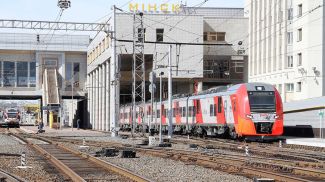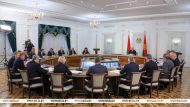MINSK, 21 April (BelTA) - Belarus is taking necessary measures to overcome the consequences of the Chernobyl accident, Sergei Shparlo, Head of the Department for Mitigation of the Aftermath of Chernobyl Accident at the Emergencies Ministry of Belarus, said during a meeting of BelTA's project Expert Community to discuss mitigation of the consequences of the Chernobyl disaster and measures for the social and economic development of the affected areas on 21 April.
“The consequences of the Chernobyl disaster were more severe for Belarus than for its neighbors, Ukraine and Russia. Radioactive contamination amounted to 23% of Belarus' total area. For comparison: it was 7% for Ukraine, and 1.5% for Russia's European part. Almost a quarter of the country's area required emergency response measures. Radioactive contamination affected more than 3,500 settlements which were home to more than 2 million people. Some 479 settlements ceased to exist,” said Sergei Shparlo. According to him, during the post-accident period the area of radioactive contamination with cesium-137 due to its radioactive decay decreased by 1.8 times and as of January 2021 it amounted to 25,000 square kilometers, or 12% of the total area of the country.
The head of the department pointed out that the Chernobyl disaster had a negative impact on all aspects of life, primarily on agriculture and forestry, industry and social sector. “In order to prevent the manufacture of products with high radionuclide content, the state had to withdraw from economic circulation some 265,000 hectares of land. They became a part of the evacuation and exclusion zones. A quarter of Belarus' forest fund was contaminated. Nearly 340 industrial enterprises made part of the contamination zone and the conditions of their operation significantly deteriorated,” he added.
Some 138,000 people were resettled from the affected areas in 1986-2007, 75% of them were the inhabitants of Gomel Oblast. Simultaneously with the organized resettlement and evacuation, some 200,000 people left the areas of radioactive contamination independently. The state provided the evacuated and resettled people with accommodation, compensatory payments, allowances and benefits.
The renewed list of the settlements situated within the zones of radioactive contamination was approved by Council of Ministers' Resolution No.75 of 8 February 2021. Their number was reduced by 144 to make up 2,022 settlements. As many as 998,000 people live there.
Belarus has been implementing state programs to mitigate the consequences of the Chernobyl accident. Spending on them from 1990 to 2020 amounted to about $19.2 billion. In 2016-2020 about 60% of the funds were allocated for social security measures, healthcare and rehabilitation of the affected population. “The medical support system for the victims of the Chernobyl disaster is based on regular medical checkups, which provide prevention, early detection of diseases and timely treatment and rehabilitation. Some 1.5 million people, including over 240,000 children and teenagers, and 70,000 Chernobyl liquidators are in special care. Every year more than 70,000 people undergo health resort treatment and rehabilitation, 98% of whom are children. The country has developed a network of 12 children's rehabilitation and health centers that host organized groups all year round,” said Sergei Shparlo.
“The state policy on mitigating the consequences of the Chernobyl accident focuses on the transition from post-accident rehabilitation measures to the development of the social and economic potential of the affected regions. Priority tasks include the development of gas infrastructure and water supply networks in settlements, landscaping, including construction of roads, housing, healthcare and education facilities, and the implementation of investment projects,” the head of the department said.













